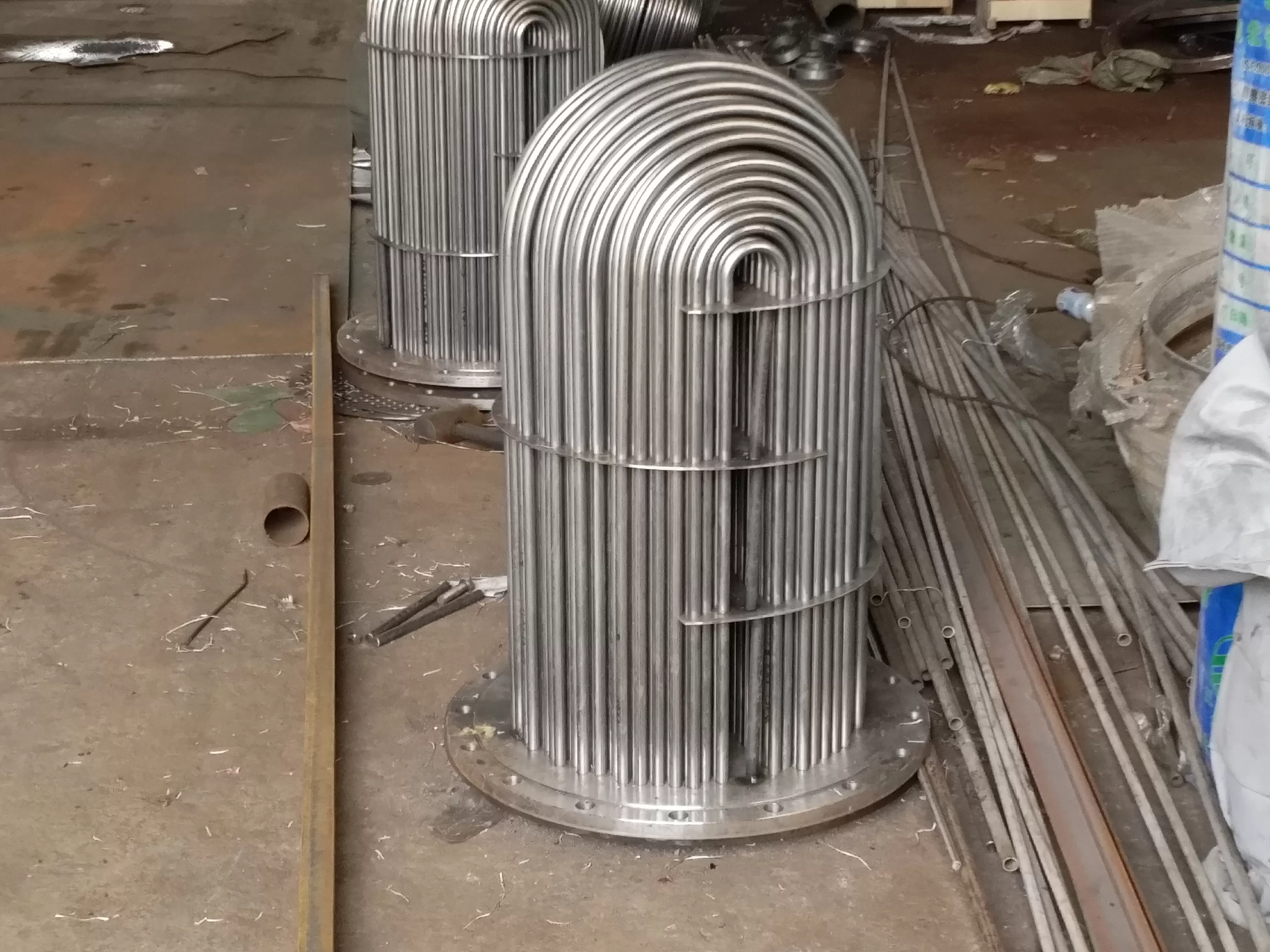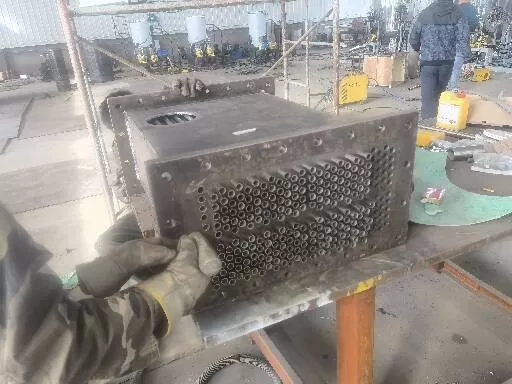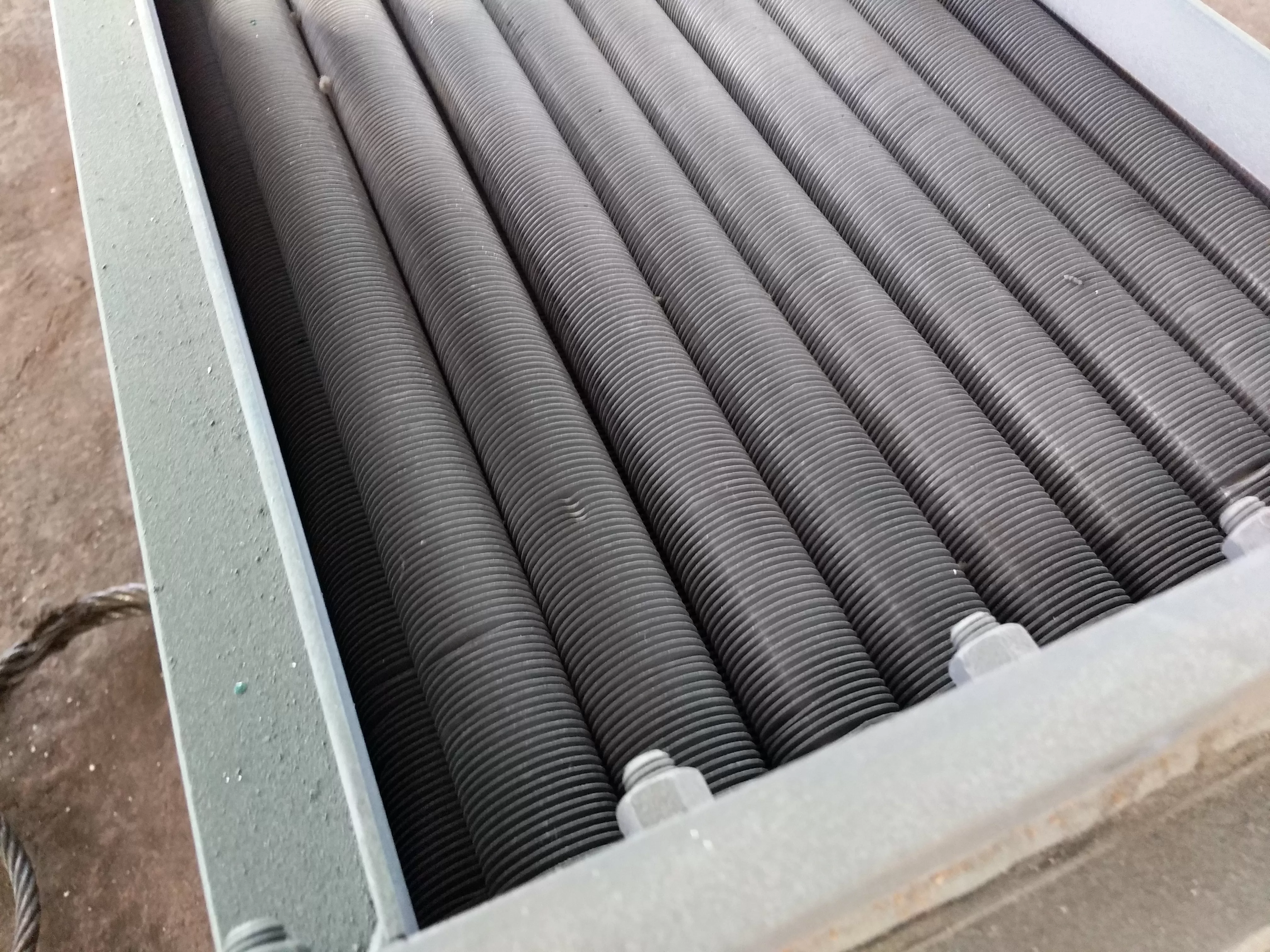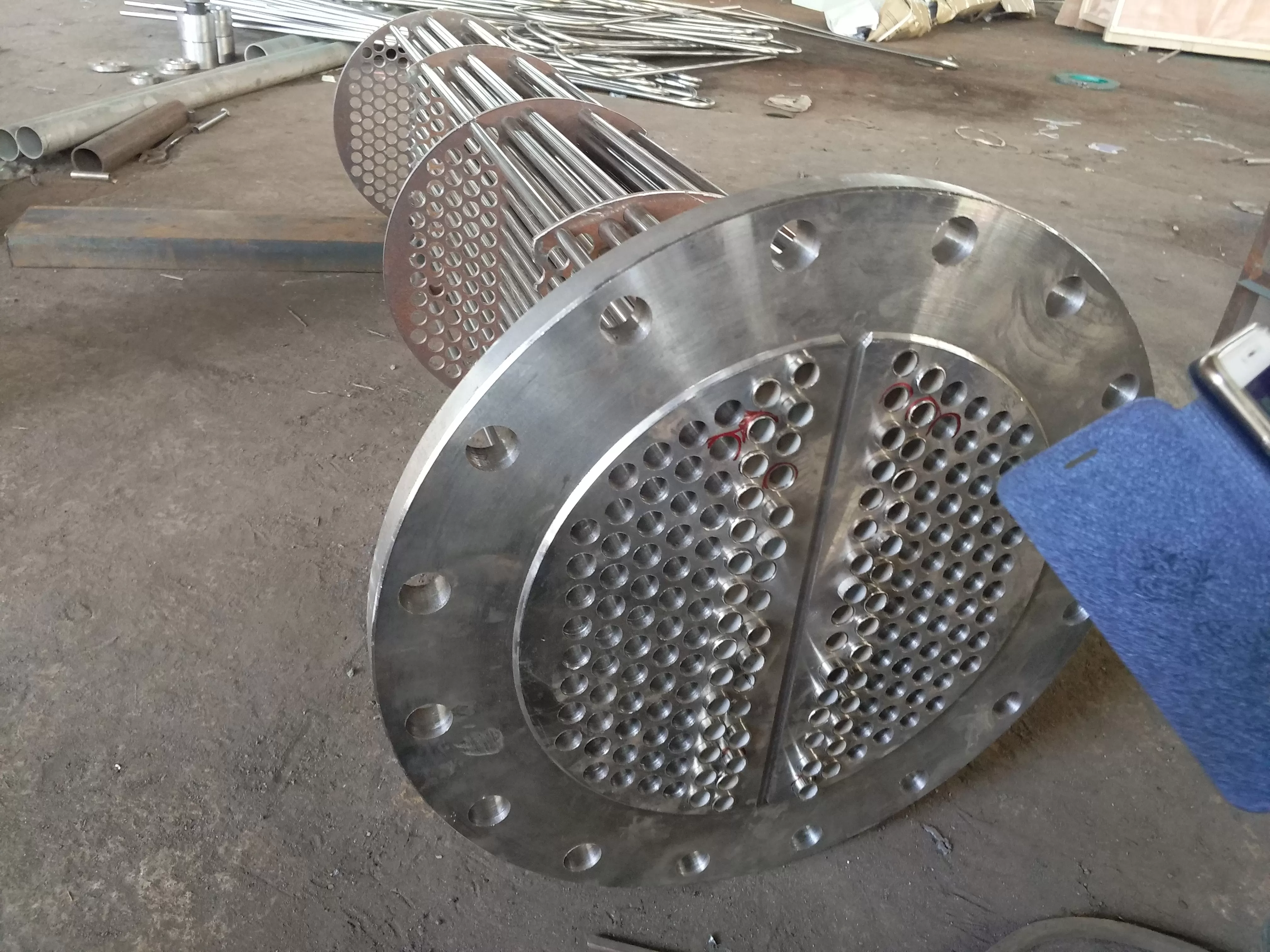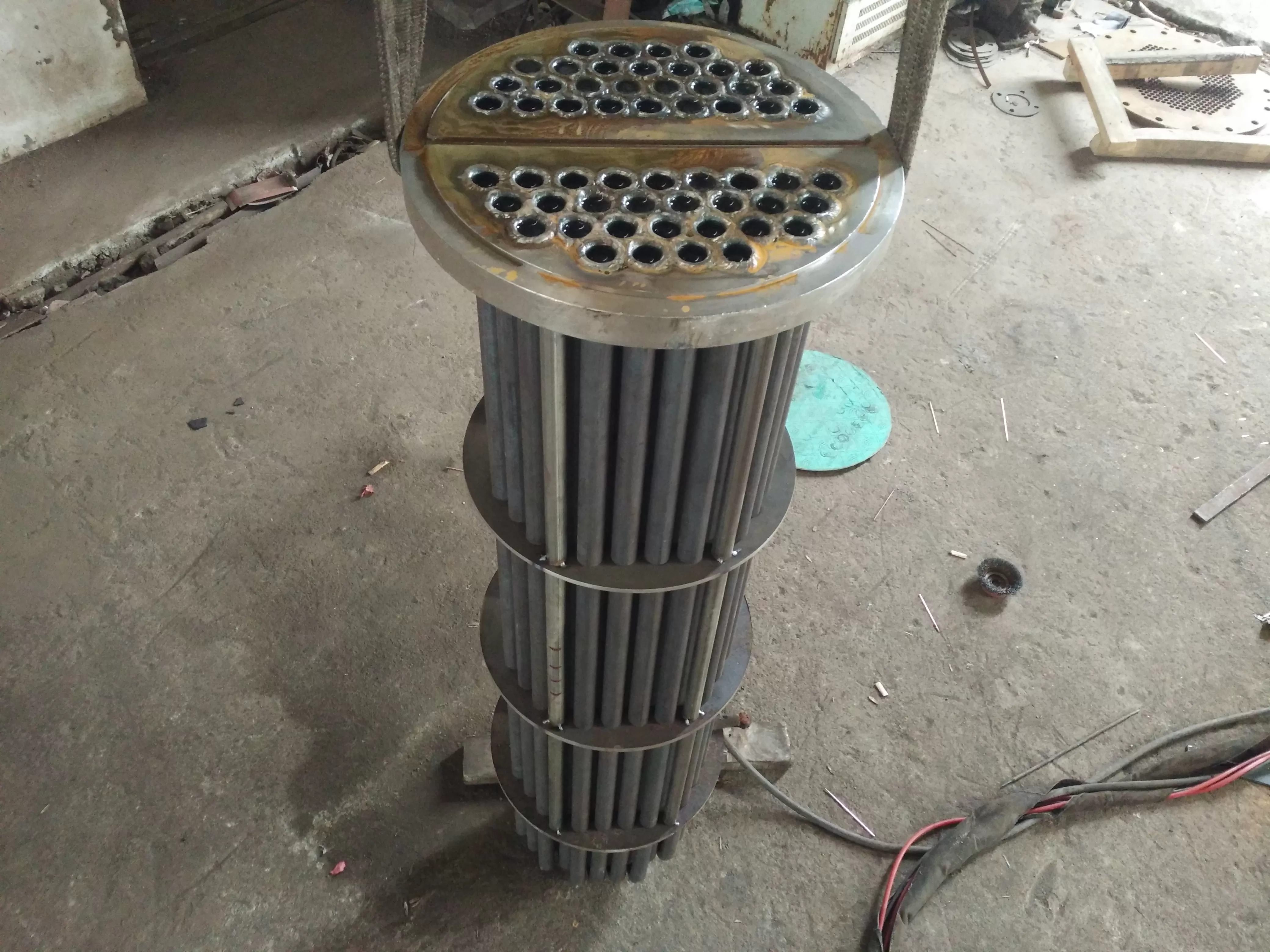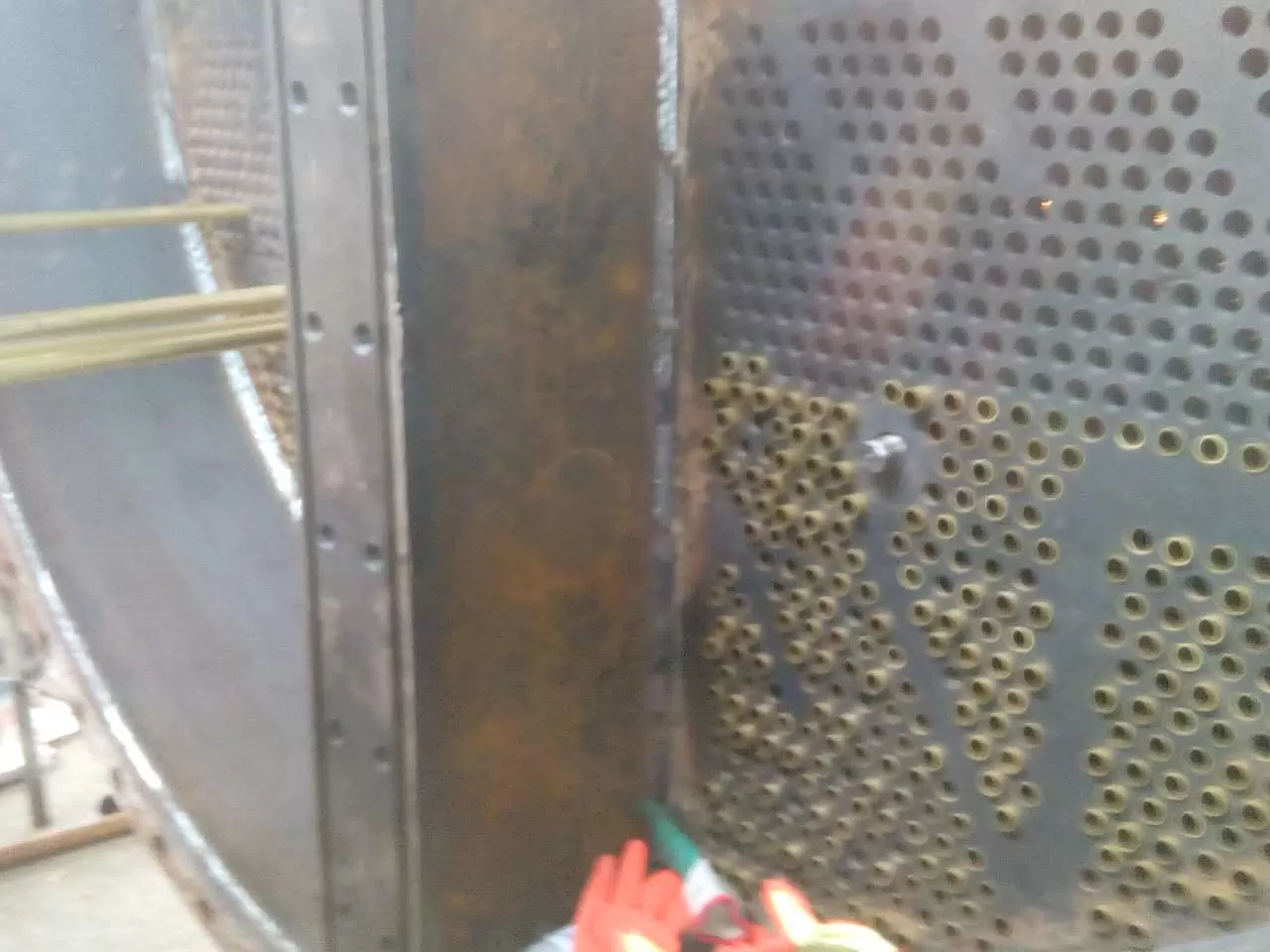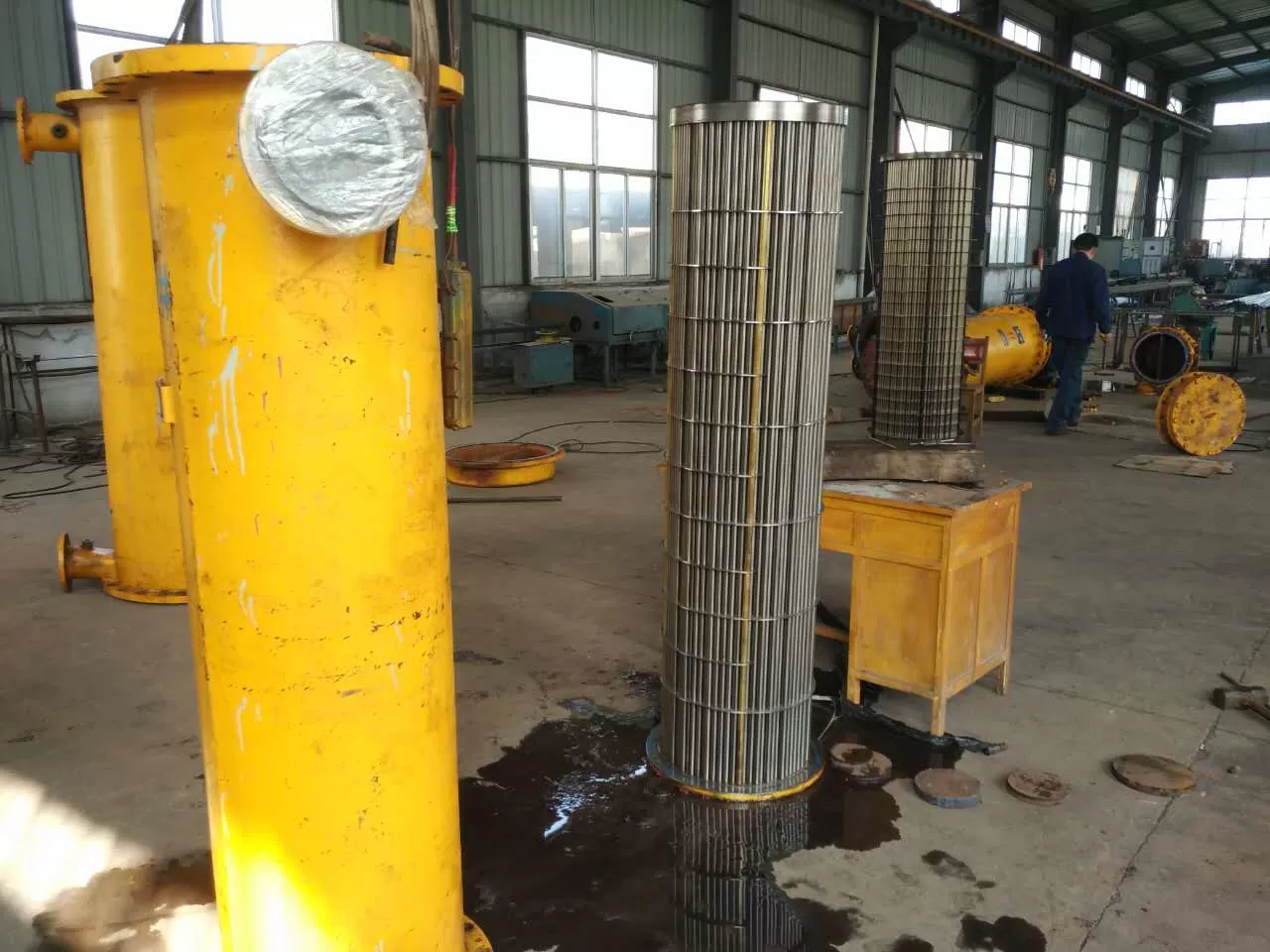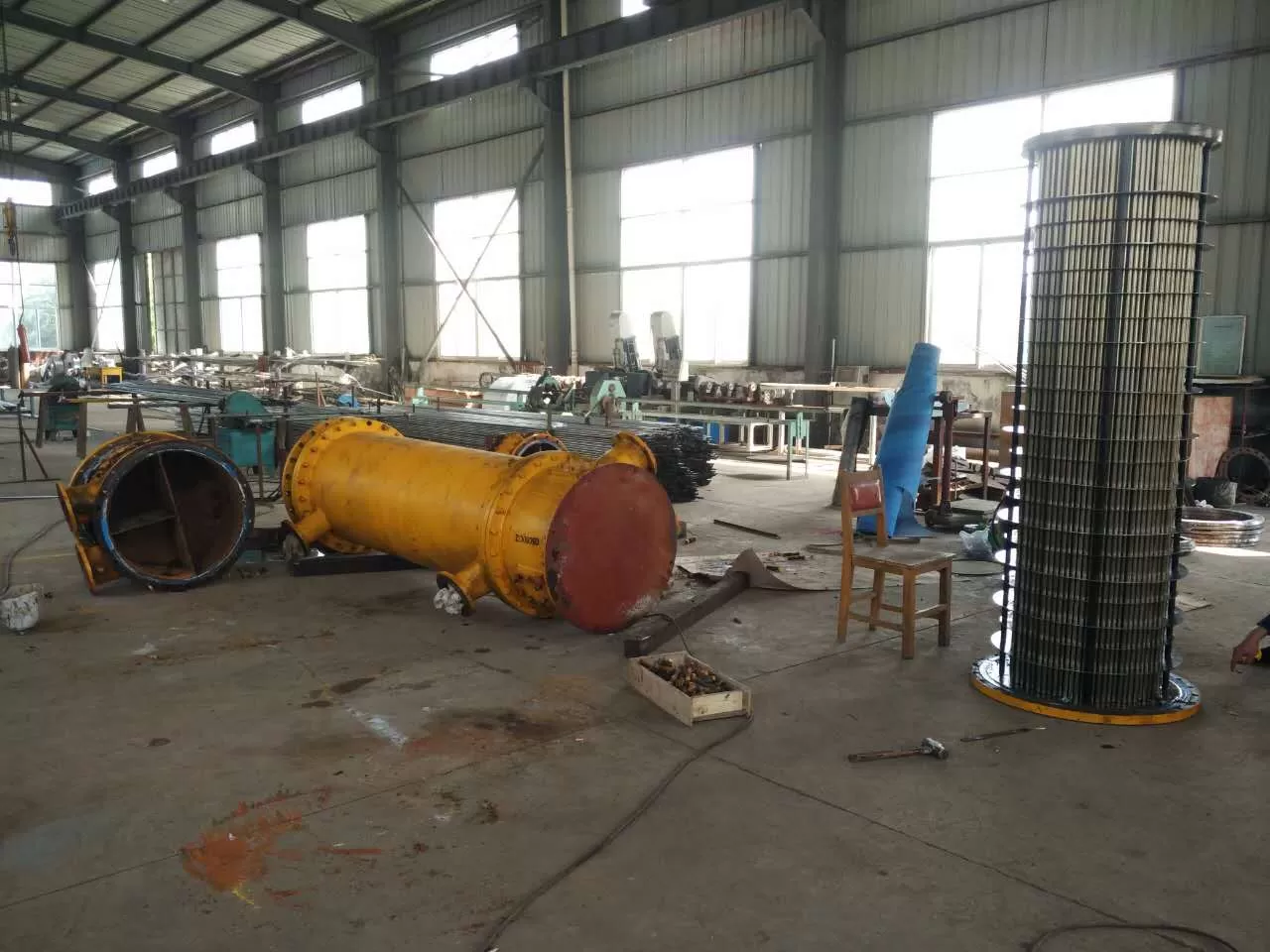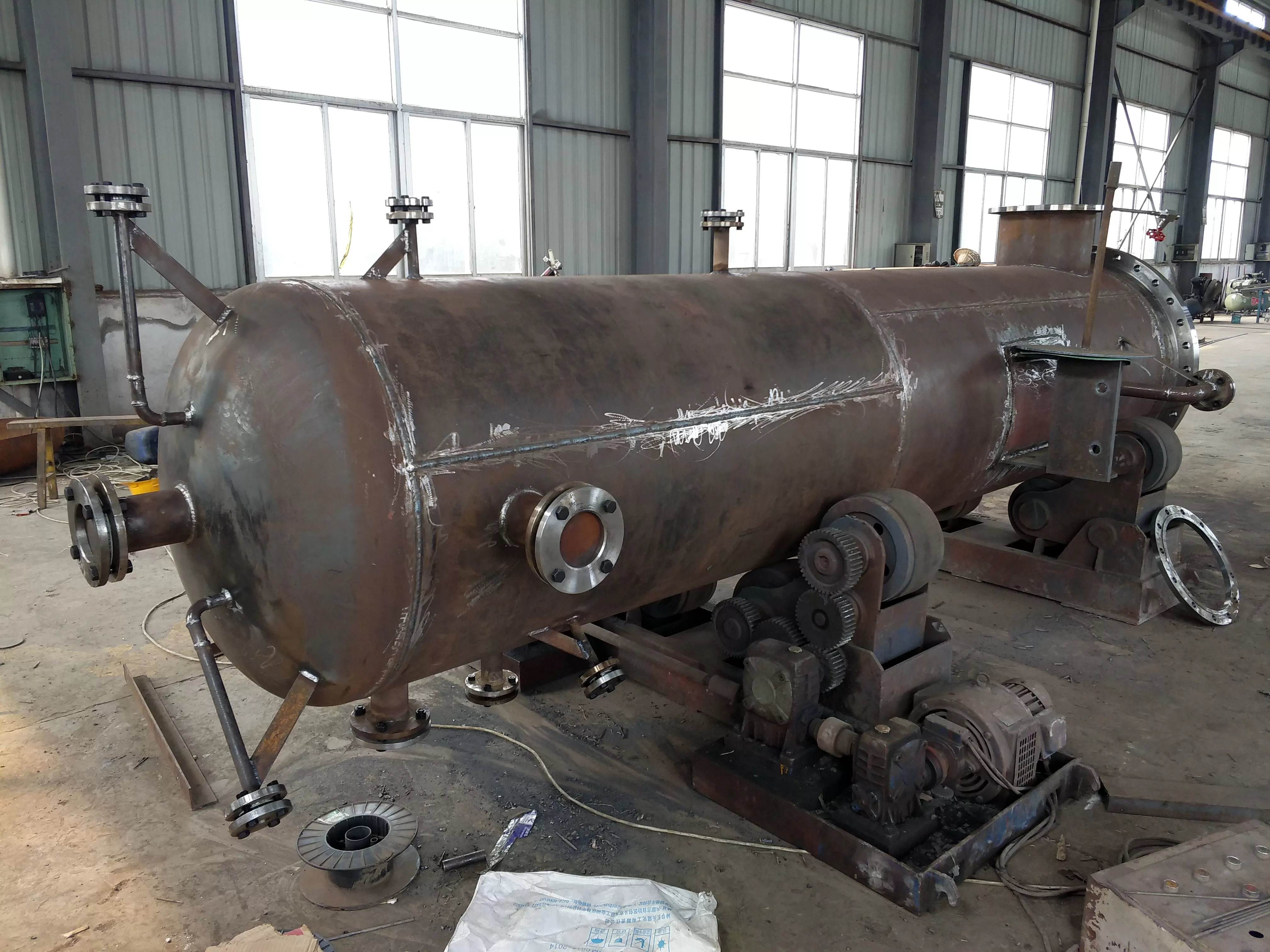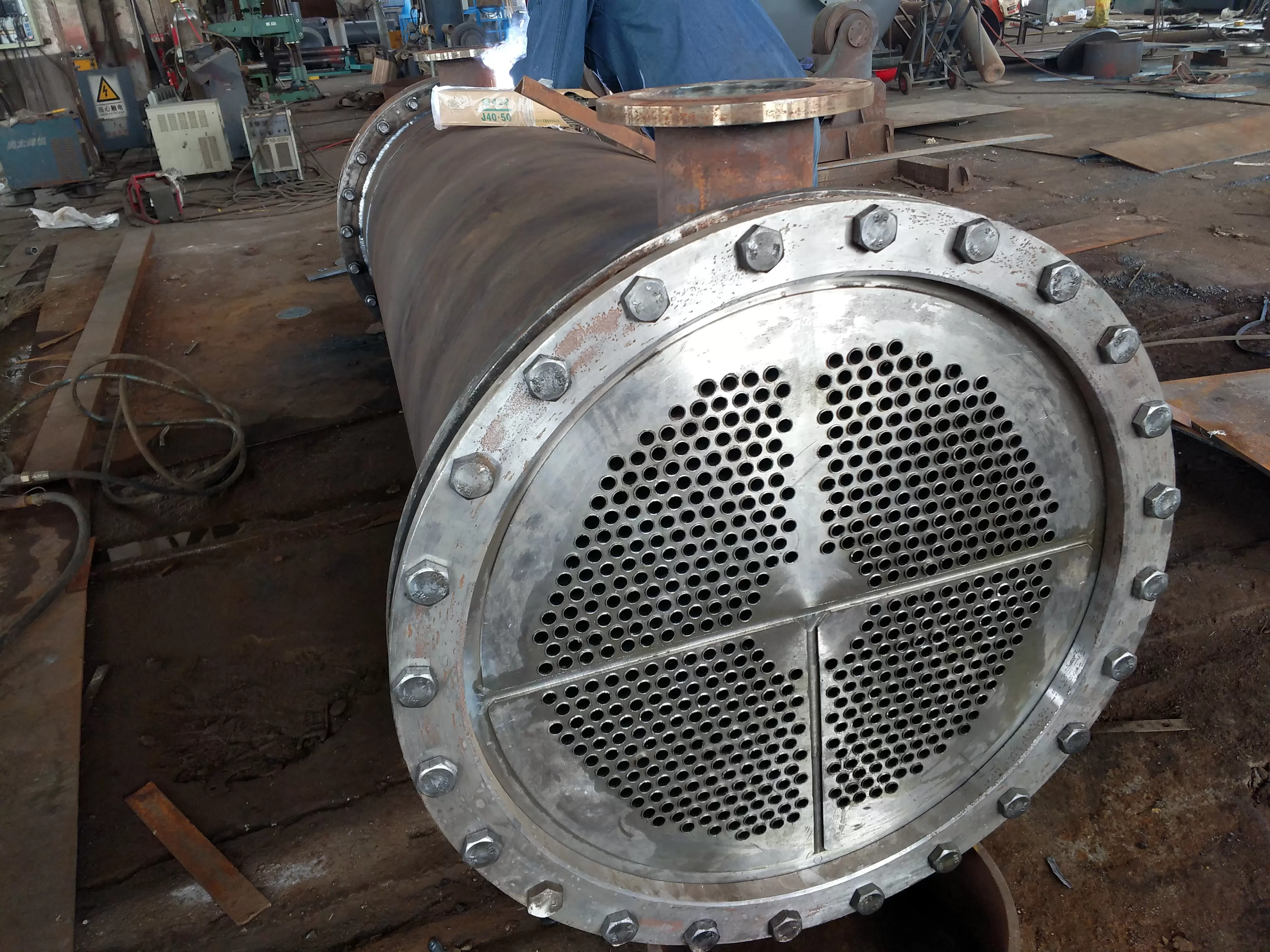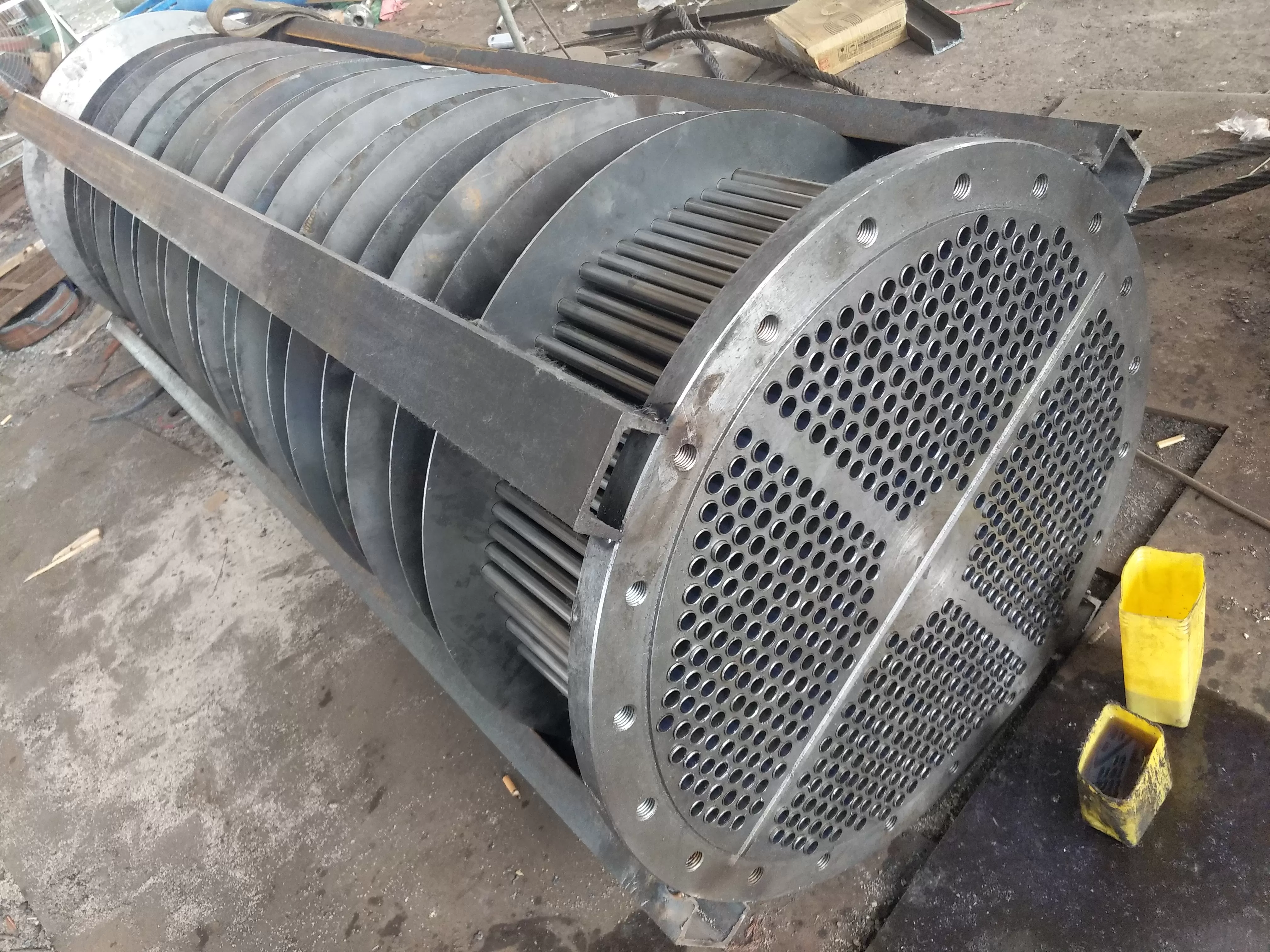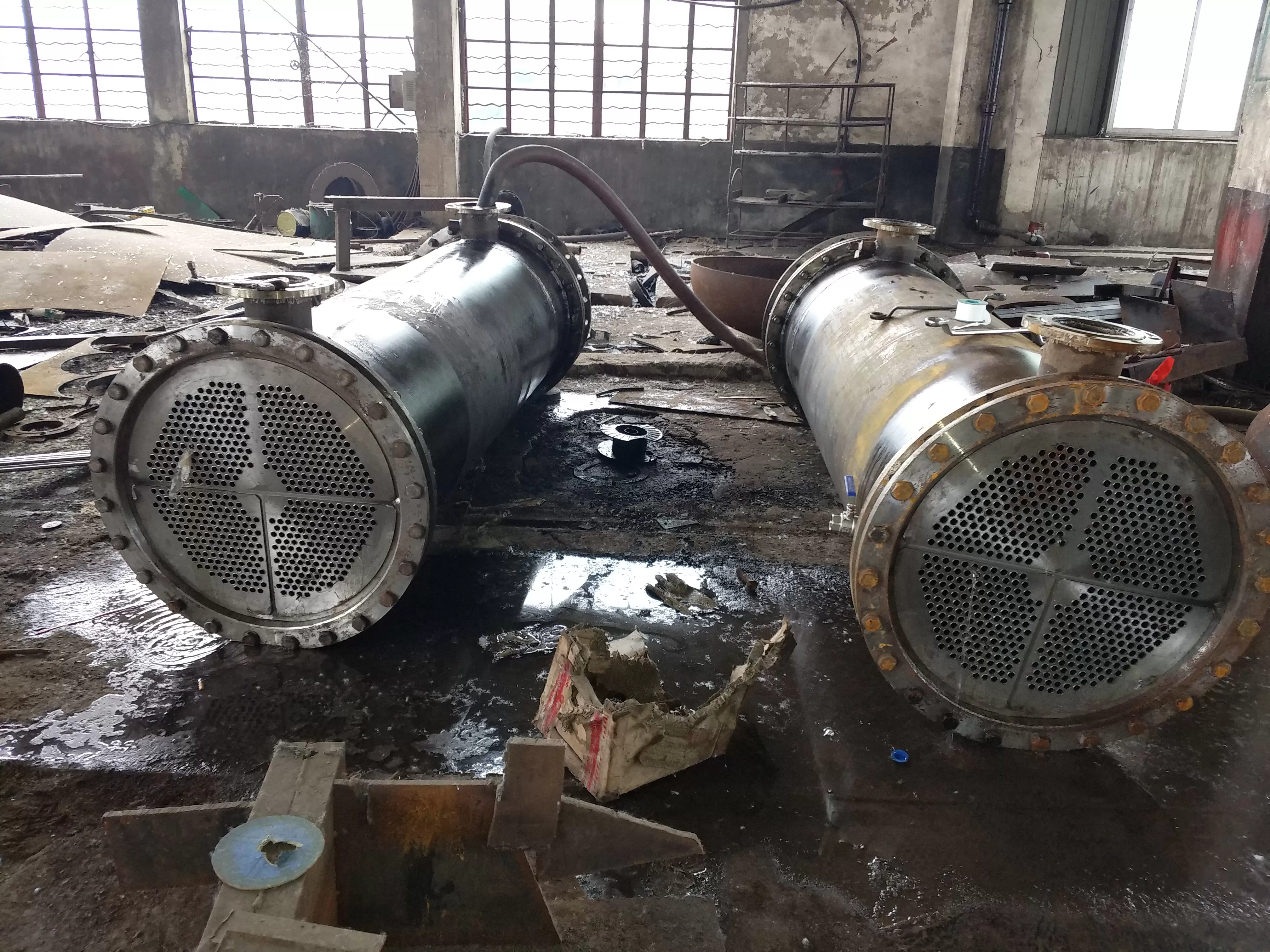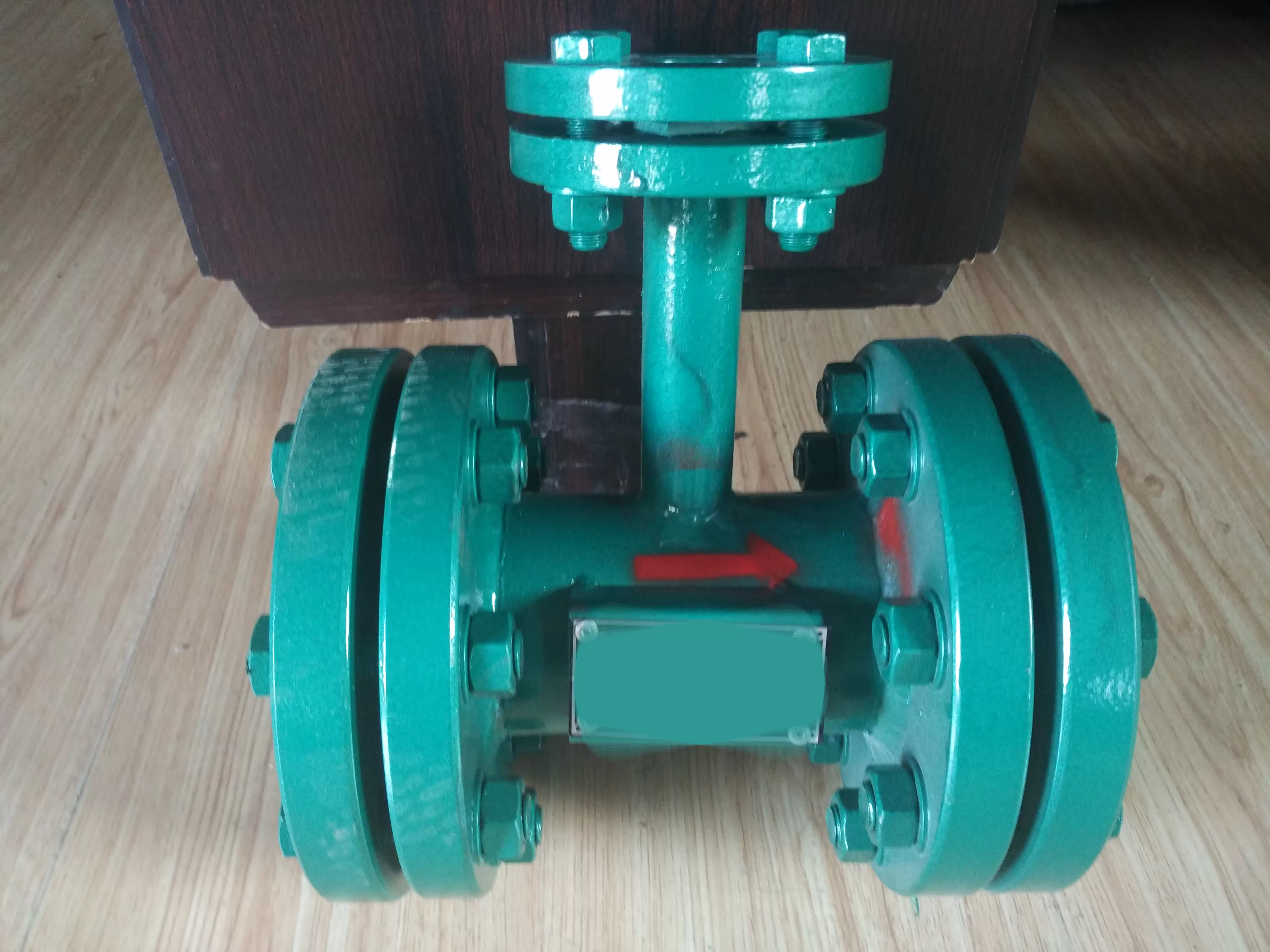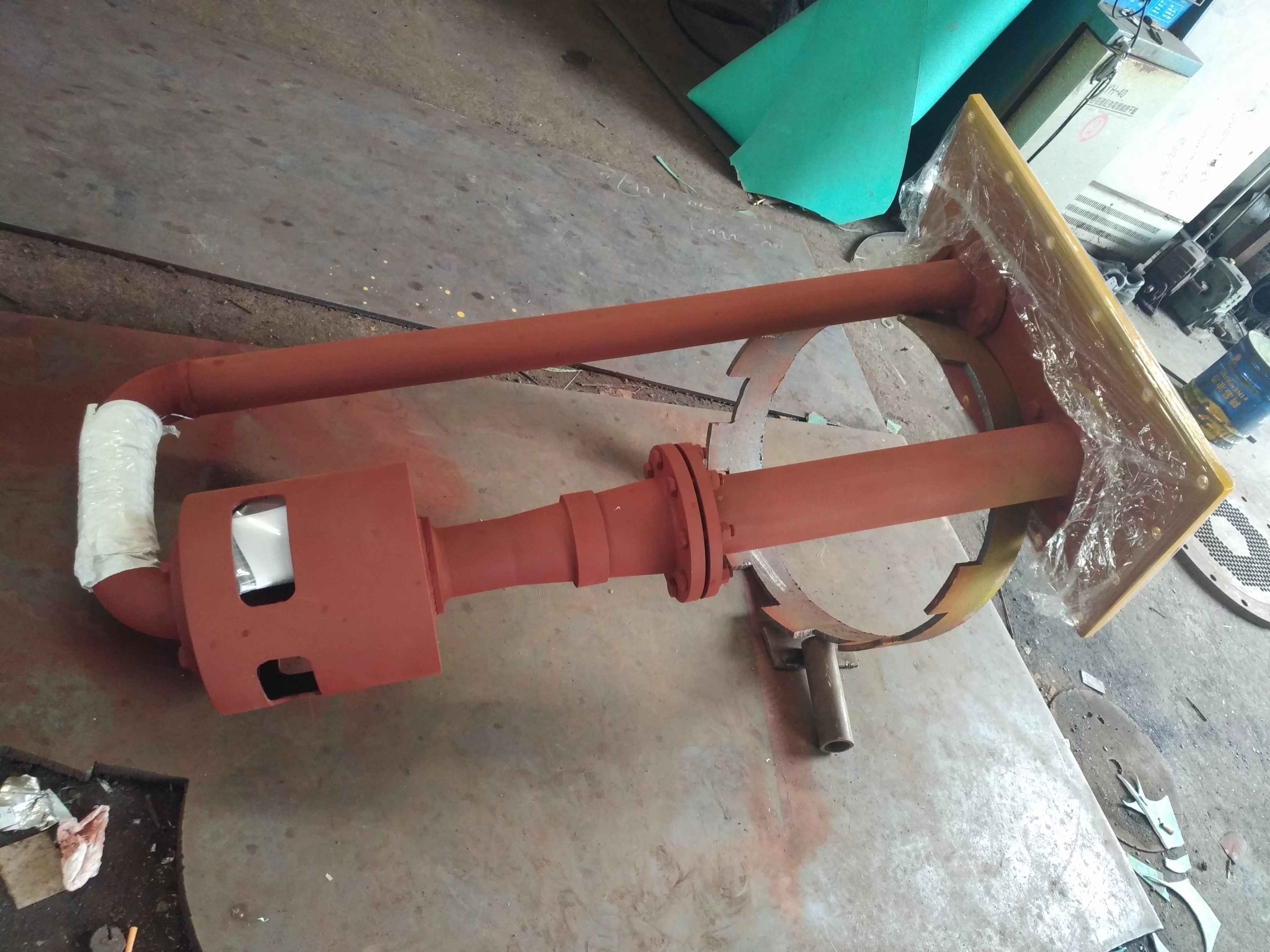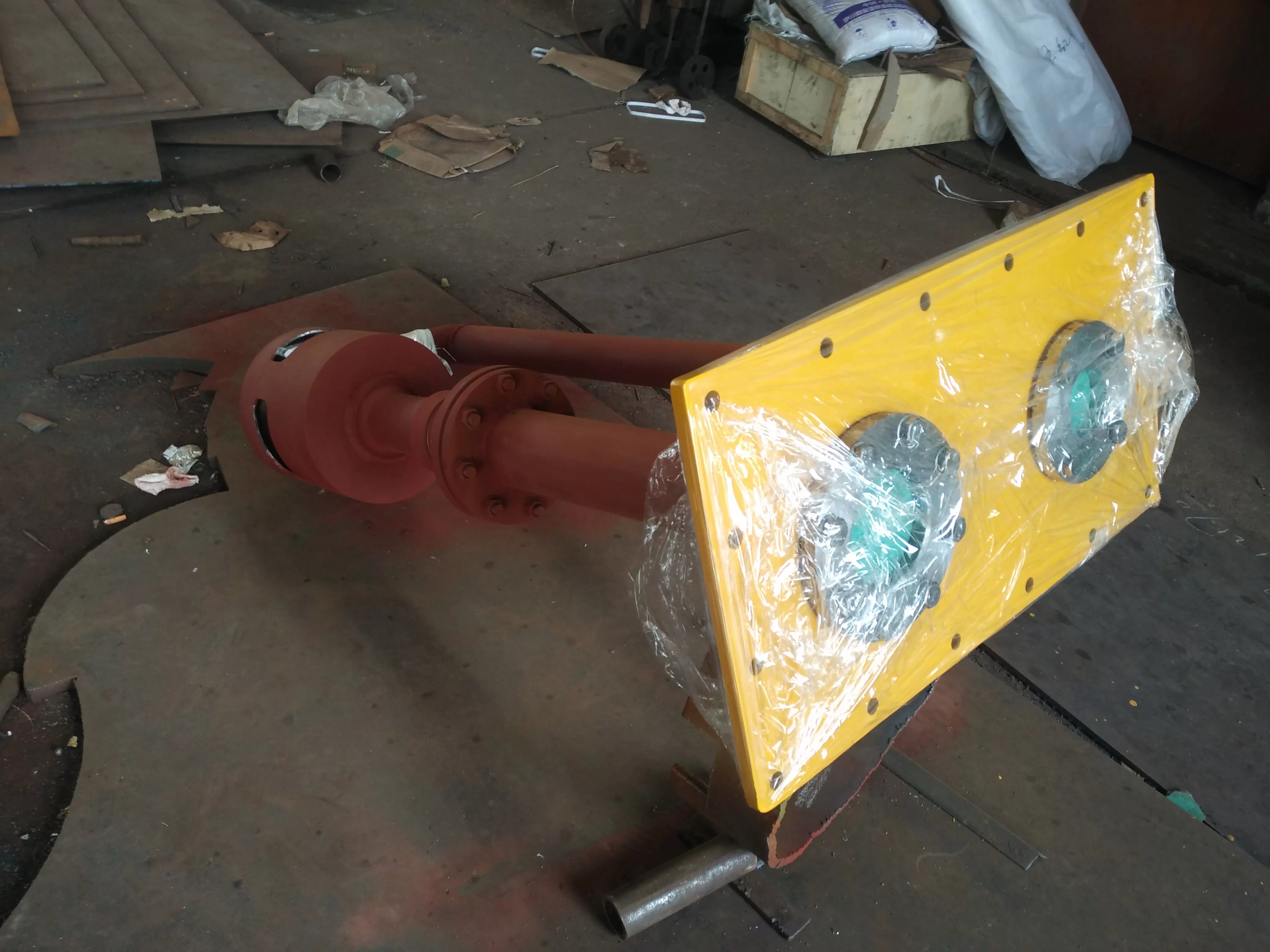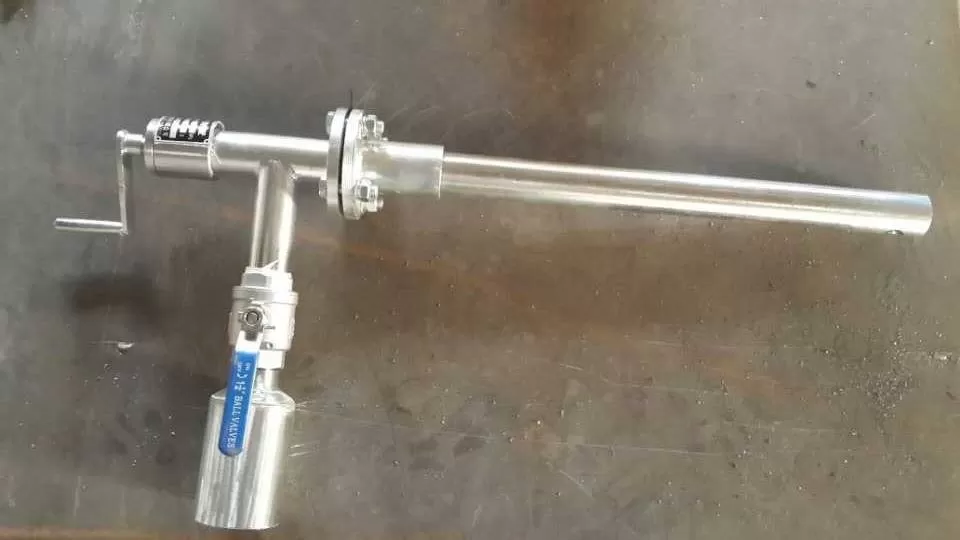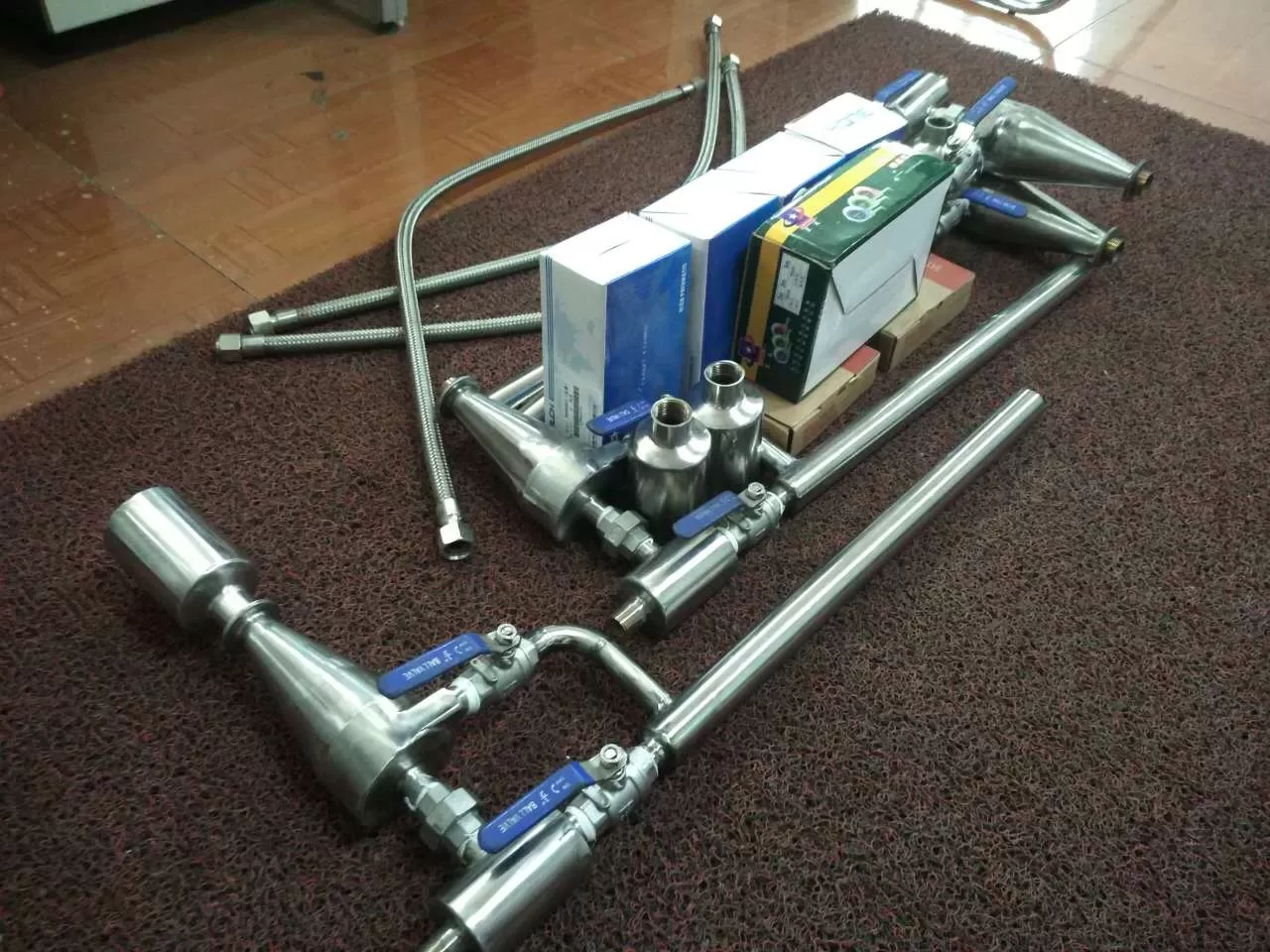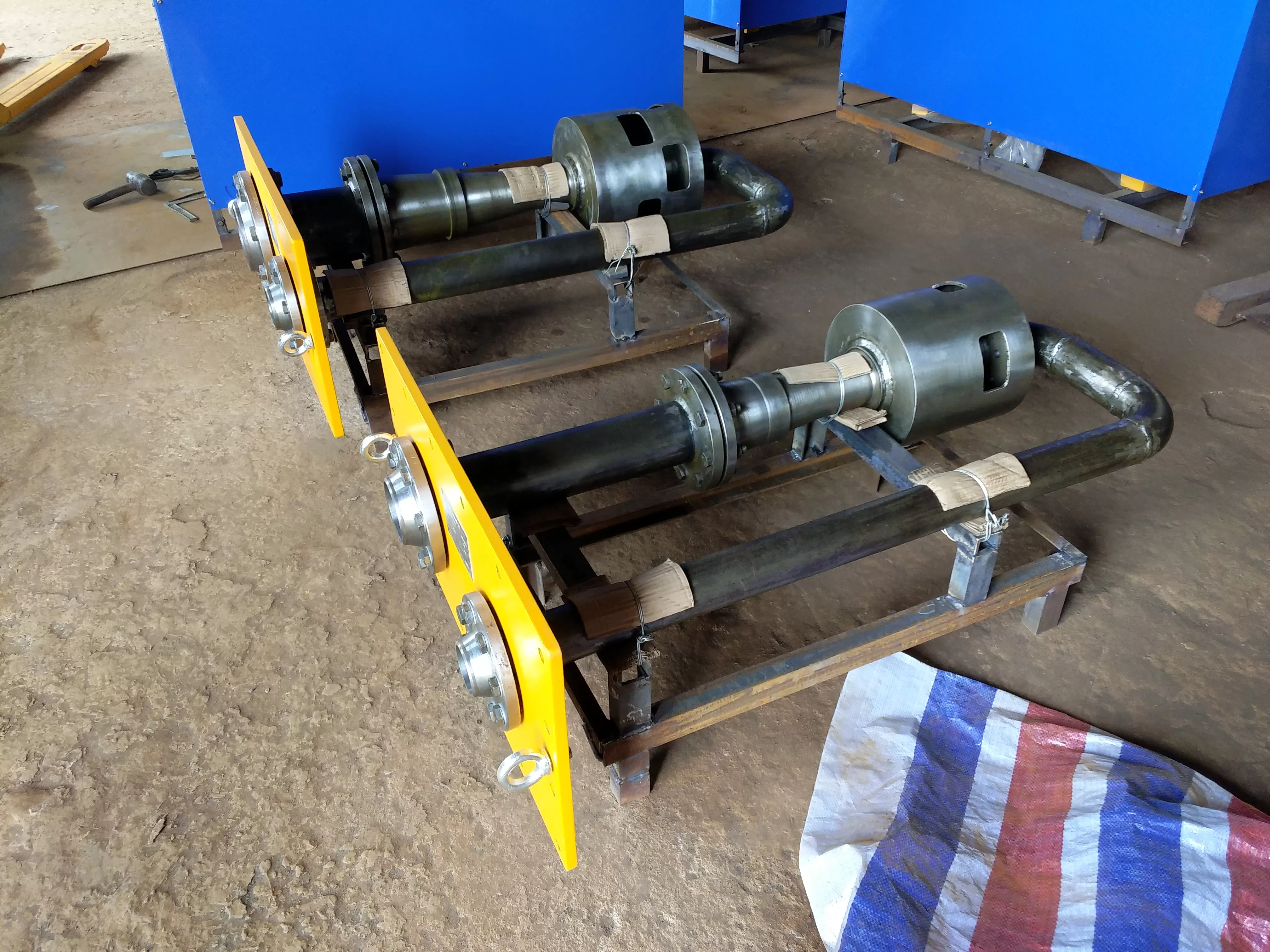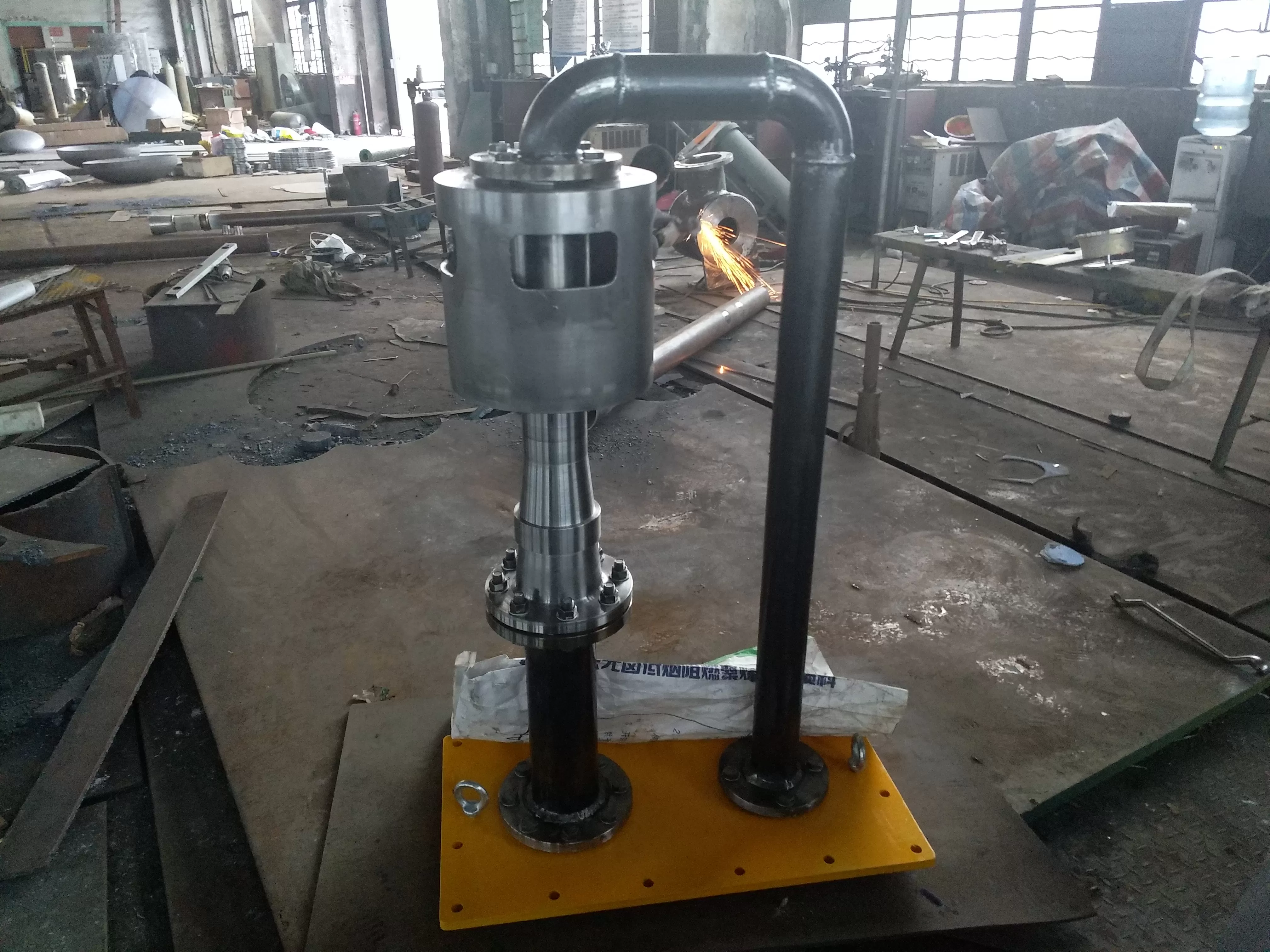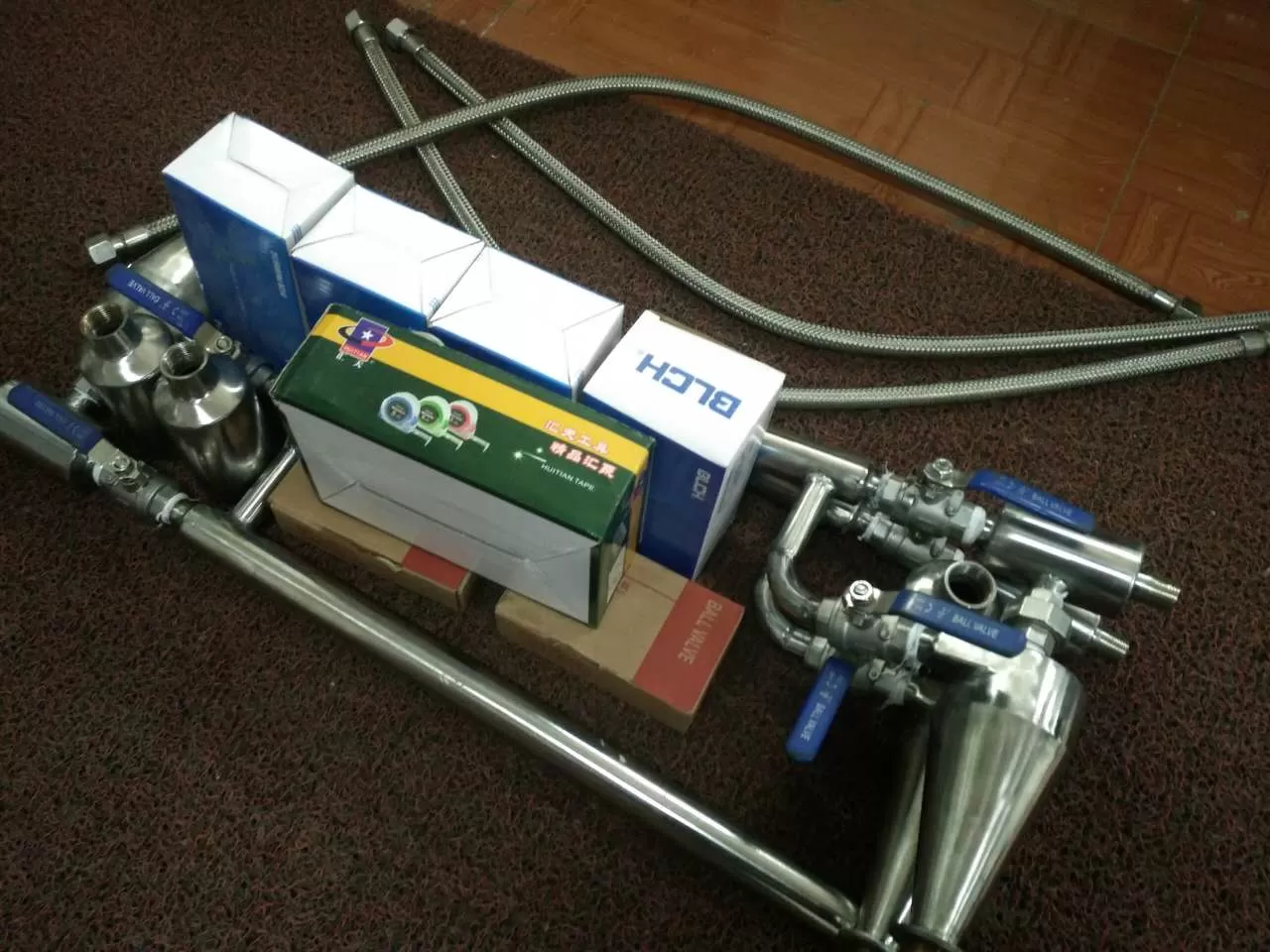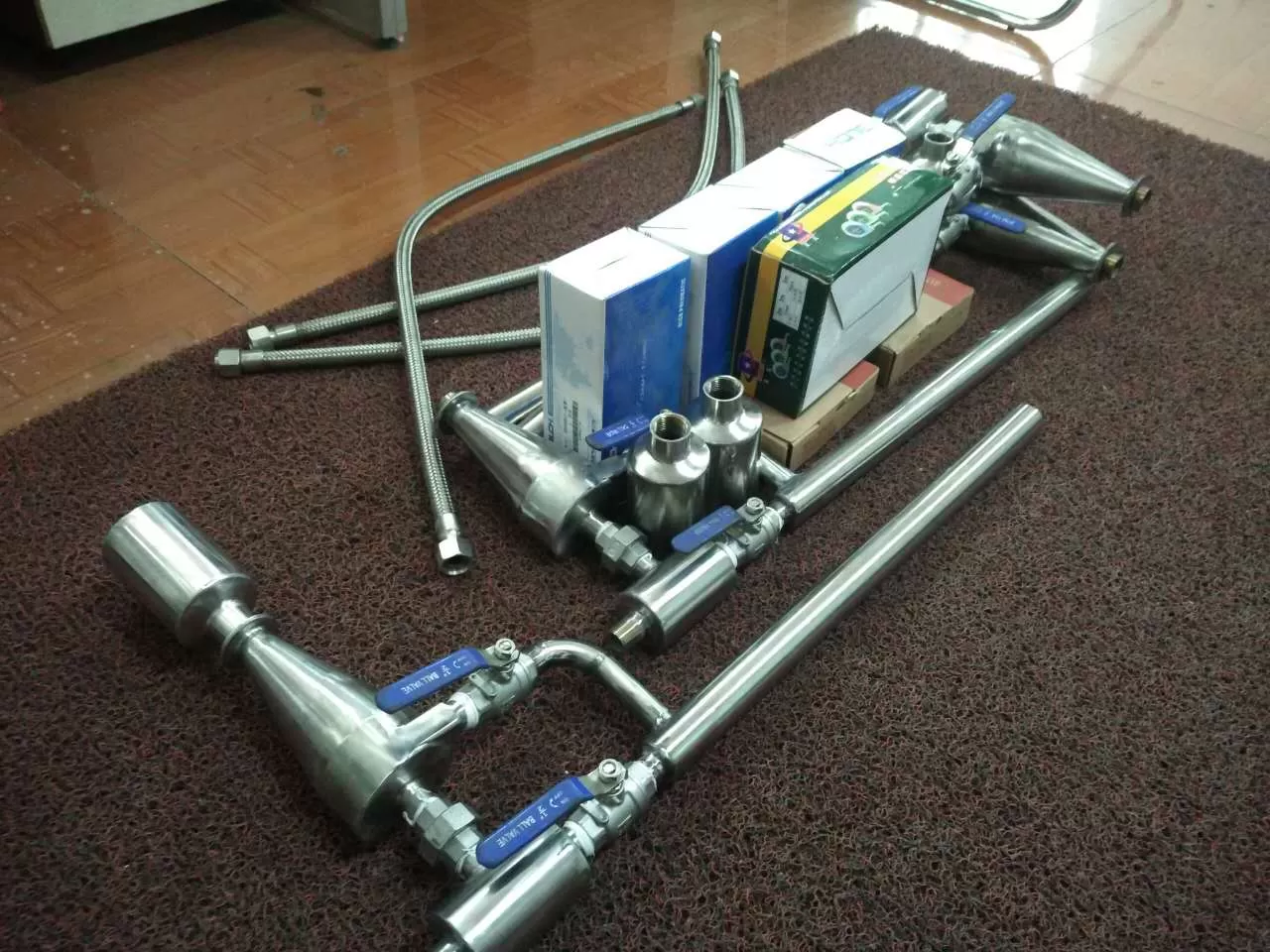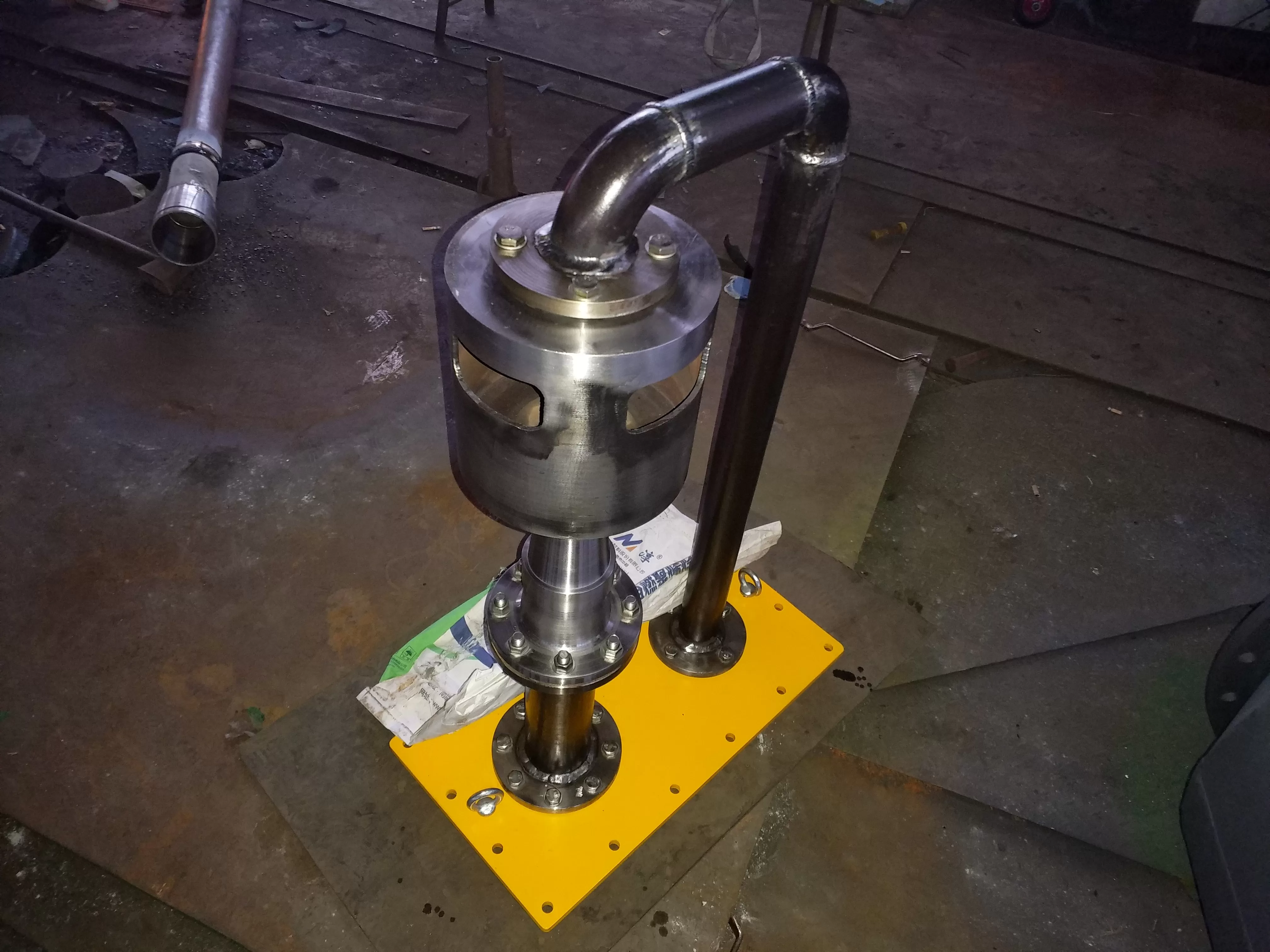Overview of chillers:
LS type chiller, also known as tubular chiller or oil-water cooler, is mainly used for circulating cooling of steam turbine generators. The water flowing through the generator passes through the outer wall of the cooling pipe of the chiller and exchanges heat with the cooling water on the inner wall of the cooling pipe, and circulates continuously. This chiller adopts a stainless steel tube type heat dissipation structure, which is longer in use, easier to repair, and more corrosive than ordinary plate structures.
Water cooler structure -
In order to improve the use of the chiller, stainless steel pipes (304 and 316L stainless steel pipes for heat exchange) are used for the heat dissipation pipes (cooling pipes) to avoid accidental expansion and cracking of the heat dissipation pipes during use. The water chamber on the chiller is sealed with a double-layer elastic compensation seal made of rubber and iron plate, ensuring reliable sealing. The stainless steel heat dissipation pipe and the two end tube plates are welded with argon gas protection instead of expansion joints to prevent leakage.
Introduction to welded stainless steel pipes:
Cold water coolers (oil water coolers) are mainly used for auxiliary machinery in industries such as thermal power generation, chemical industry, and steel. Welded steel pipes (also known as slotted pipes and welded pipes) are used for pipe replacement, such as condenser and heater pipe replacement, tubular oil cooler pipe replacement, oil-water cooler pipe replacement, tubular oil cooler pipe replacement, Le tube cooler pipe replacement, turbine oil cooler pipe replacement, marine oil cooler pipe replacement, chiller -304/316l stainless steel pipe replacement, Condenser - replace 304/316l stainless steel tubes, heat exchanger - replace 304/316l stainless steel tubes, heat exchanger - replace 304/316l stainless steel tubes, shaft seal heater - replace 304/316l stainless steel tubes, steam seal heater - replace 304/316l stainless steel tubes, low-pressure heater - replace 304/316l stainless steel tubes, air preheater tubes, air cooler tubes, air cooler tubes, waste heat recovery device tubes, and volumetric heat exchanger tubes, Energy harvester tube replacement and related tube bundle tube replacement. Oil cooler tube change, oil cooler tube change, stainless steel tube heat exchange tube specification: diameter Ф 12~ Ф 32mm, with a wall thickness of 0.6-3.0mm. The deviation value of the pipe wall thickness is ± 0.05mm, and there are two types of lengths: fixed length and indefinite length- The types of stainless steel pipes used include 304, 304L, 316, 316L, 317, and 317L.
Process requirements for replacing stainless steel pipes in a series of tube type chillers:
1. Preparation of stainless steel pipe: After passing the inspection, cut the stainless steel pipe according to the size of the oil cooler. The stainless steel pipe should be 4-5 millimeters longer than the pipe plate. Remove burrs from both ends of the stainless steel pipe, polish the expanded part of the pipe smooth, and perform tempering treatment at about 50 millimeters at both ends.
2. Remove old stainless steel tubes: Use a semi-circular triangular chisel to remove them. When removing, be careful not to damage the tube plate. Polish the stainless steel tube, remove the old stainless steel tube, clean the tube plate hole, polish it with a fine sandcloth, and wipe off the dust with a cloth.
3. Pipe threading and expansion: After both the pipe plate and stainless steel pipe are prepared, they can be threaded through the stainless steel pipe. Be careful not to use too much force or force, align them with your own hole position, and install them. The exposed parts at both ends of the pipe should be equal. The diameter of the pipe plate hole is slightly larger than the pipe diameter, about 0.5 millimeters, and should not be too large or too small. After the stainless steel pipe is threaded, a pipe expander can be used to expand the mouth. When expanding the pipe, the force and speed should not be too large or too small. The length of the expanded pipe should be 2/3 of the thickness of the pipe plate, and should not be greater than the thickness of the pipe plate. After the expansion is completed, both ends should be flanged with a punch.
4. When replacing stainless steel pipes, it is necessary to replace them half by half, and then disassemble the other half.
5. The welded joint after pipe replacement needs to undergo leakage or damage testing.
6. The oil and water cooler tube and core replacement renovation usually involves dismantling the entire oil cooler equipment and shipping it to our company for tube bundle replacement. This is more economical than on-site tube replacement - it increases the speed of tube and core replacement. The replacement speed of the chiller pipe is slow during the production time of the pipes, as they are all customized. After the pipes are replaced, the assembly speed of the replacement pipe can be completed in 3-5 days!
Installation, operation and maintenance of chillers:
1. Properly place the chiller and ensure that the relative connection positions of the inlet and outlet pipes are accurate.
2. The inlet and outlet pipe flanges and installation foot bolts should be assembled on site.
3. All pipeline flanges and valves are sealed tightly and leak.
4. When the chiller is put into operation, the pipeline should be cleaned to prevent sediment and debris from blocking the heat dissipation pipe.
5. When the chiller is put into operation, the exhaust valve should be operated to exhaust the gas inside its casing.
6. When shutting down the chiller in severe cold seasons, the cooling water of the chiller should be drained to prevent equipment from freezing and cracking.
Cold water cooler pipe replacement oil water cooler stainless steel pipe structure ---:
1. Heat transfer energy difference, due to the use of thin-walled stainless steel tubes with a wall thickness of 0.5-0.8mm, the heat transfer energy is improved. Under the same heat transfer area, 304/316L stainless steel heat transfer tubes are about 1.2-1.30 times larger than copper tubes
2. Strong corrosion resistance, corrosion resistance, ammonia corrosion, and general corrosion. 304/316L stainless steel heat exchange tubes can be used for more than 10 years.
3. Due to the use of high-energy stainless alloy steels such as TP304 and TP316L as stainless steel materials, the surface has high strength, and the inner wall of the pipe is smooth, which reduces the thickness of the boundary laminar flow layer. Therefore, it has strong high-temperature steam erosion energy.
4. The rigidity and vibration resistance of the pipe are improved.
5. Strengthening the heat exchange tube has improved the ability to resist scaling.
6. The process of installing stainless steel heat exchange tubes can be achieved by using the expansion tube technology of transmission. The outer diameter tolerance is consistent with the steel pipe, and there is no need to change the machining tolerance of the tube plate hole, which is conducive to direct selection and convenient for replacing stainless steel tubes with copper tubes in the unit
7. Economically, under the same heat exchange area, the cost is about 60% of copper tubes, and stainless steel heat exchange tubes can be directly used for tube exchange.
8. Stainless steel heat exchange tubes are made by highly automated pipe making equipment, which is formed by self corrosion solution welding and flipping. Under any metal filler, they are filled with gas protection (inner and outer sides of the tube) and welded. The welding method is TIG process and undergoes in solution eddy current testing.
9. In order to eliminate the stress on the pipe, heat treatment can be carried out at a high temperature of 1040 ℃ under protective gas, or time-vibration treatment can be carried out as needed.
10. All steel pipes shall be subjected to water pressure pneumatic testing one by one, and the pressure shall be tested to within 10Mpa for 10 seconds before depressurization.
11. After leaving the factory, conduct eddy current testing on each tube, with a frequency of 10-30 kHz.
12. The outer diameter deviation of the pipe is generally ± 0.10mm, the wall thickness deviation is ± 10%, and the length deviation is ± 5mm.
13. All pipes shall be checked for their full length using a gauge.
14. The raw materials entering the factory and the finished products being shipped are both tested and a test report is issued.
The replacement of stainless steel pipes for chillers has the following features:
1. Stainless steel tube heat exchange tube heat transfer energy. Due to the use of thin-walled stainless steel tubes with a wall thickness of 0.5-0.7mm, the overall heat transfer energy is improved. Under the same heat exchange area, the overall heat transfer coefficient is 2.124-8.408% higher than that of copper tubes.
2. Due to the use of American standard AISl304, 316l and other stainless alloy steels for the pipes, they have high hardness and the rigidity of stainless steel pipes is also significantly improved. Therefore, it has strong impact energy and anti vibration energy of high-temperature steam.
3. Due to the smooth inner wall of stainless steel pipes, the thickness of the bottom layer of the boundary laminar flow is reduced, which not only enhances heat transfer but also improves the ability to resist scaling.
4. The process of exchanging stainless steel tubes for oil water coolers and heat exchange tubes in chillers adopts the expansion tube technology of transmission. The outer diameter tolerance of stainless steel tubes is the same as that of copper tubes, and there is no need to change the machining tolerance of tube plate holes, which is conducive to direct on-site selection and convenient for unit oil cooler tube exchange.
5.304/316l stainless steel heat exchange tubes are economical. Under the same heat exchange area, the cost of stainless steel tubes is about 80% of the cost of copper tubes, and can be directly transformed into tube bundles.
In order to eliminate welding stress on heat exchange tubes, heat treatment is carried out at a high temperature of 1050 ℃ under protective gas.
7. All pipes are subjected to pressure difference method for leakage inspection, with a pressure test reaching 1.0Mpa and a pressure drop of 5 minutes.
Function of chiller:
This device is one of the heating and cooling domain type devices, with a compact structure, small footprint, and high heat transfer rate. The chiller is mainly used for cooling the generator rotor and air cooling water in dual water internal cooling generator sets. This chiller adopts a stainless steel heat dissipation structure. It has pressure resistance, large heat exchange area, thermal resistance to water, long service life, and convenient maintenance. To ensure that the internal cooling water entering the generator is highly clean, the shell, tube plate, and discharge plate of the chiller are all made of stainless steel. Heat exchange tubes - use 304 and 316L stainless steel tubes; T2, HSn70-1, HSn70-1B copper pipes.
The form of the chiller:
According to the installation form, it is divided into two types: vertical chiller and horizontal chiller.
Summary - Based on internal and external design and operating experience, compared to brass pipes, the welding of stainless steel heat exchange pipes in chillers has the following advantages:
1. Stainless steel heat exchange tubes are three times more corrosion-resistant, vibration resistant, and wear-resistant than copper tubes, and can be used;
2. Stainless steel pipes are not easy to stain or scale, and can last for 10-20 years;
3. Although the thermal conductivity of stainless steel heat exchange tubes is inferior to that of copper, the wall thermal resistance only accounts for 3% to 5% of the total thermal resistance. Due to the increase in water velocity inside the pipe, the increase in cleanliness coefficient, and the decrease in wall thickness, the heat transfer energy of stainless steel is higher than that of copper alloy;
4. The manufacturing technology, specifications, performance indicators, inspection methods, and scale of the inner thin-walled welded tubular chiller have all reached an international level;
5. The thermal conductivity coefficient of stainless steel pipes is lower than that of copper pipes, but the difference in thermal conductivity coefficient is reduced by reducing the wall thickness. Due to the smoother inner wall compared to copper pipes, the convective heat transfer coefficient is higher than copper pipes, and the smoother outer wall compared to copper pipes, the condensation heat release coefficient is higher than copper pipes. According to the testing and calculation of one unit, the overall heat transfer coefficient of stainless steel pipes with a wall thickness of 0.7mm is about 2.124% higher than that of copper pipes with a wall thickness of 1mm;
6. As the operating time increases, the overall heat transfer coefficient of stainless steel pipes decreases slowly, while the overall heat transfer coefficient of copper pipes decreases much faster than that of stainless steel pipes. In the long run, using it as a whole improves the economy of the unit, while also improving the safety of the unit.
Technical parameters of chiller:
1. Permissible water pressure: 0.6Mpa
2. Working pressure: 0.5 Mpa
3. Inlet water temperature: 33 ℃
4. Outlet water temperature: ≤ 30 ℃
5. Water consumption: 20-150m ³/ H
6. Heat exchange area: 5-80m ²
7. Cooling pipe diameter: φ 14~ φ eighteen
8. Cooling pipe material: Heat exchange pipe - use 304 and 316L stainless steel pipes; T2, HSn70-1, HSn70-1B copper pipes.
Instructions for ordering chillers:
1) Model of steam turbine unit
2) Cooling water volume
3) Heat exchange area of oil-water cooler
4) Model of chiller
5) Material of pipe and shell, partition, and tube plate: shell, carbon steel, stainless steel. Pipe materials: stainless steel pipes, copper pipes, titanium pipes, etc.
6) How many units of tubular chillers need to be replaced
7) The replacement of pipes for oil-water coolers requires the provision of chloride ion content in the water quality used.
Model parameters of steam turbine oil cooler and water cooler:
| 汽轮机规格 | 冷油器型号 | 冷却面积
(m²) | 冷却油量
(t/h) | 进油设计温度
(℃) | 出油设计温度
(℃) | 设计水量
(t/h) | 配套台数 | -高工作水温
(℃) |
|
| N1.5MW | LY-10 | 10 | 8 | 55 | 45 | 25 | 1 | 33 |
| N3MW | LY-10 | 10 | 8 | 55 | 45 | 25 | 2 | 33 |
| N6MW | LY-12.5 | 12.5 | 8.7 | 55 | 45 | 25 | 2 | 33 |
| N12MW | LY-17.5 | 17.5 | 12.6 | 55 | 45 | 30 | 2 | 33 |
| N15MW | LY-20 | 20 | 12.6 | 55 | 45 | 30 | 2 | 33 |
| N20MW | LY-30 | 30 | 27 | 55 | 45 | 65 | 2 | 33 |
| N25MW | LY-35 | 35 | 30 | 55 | 45 | 85 | 2 | 33 |
| N30MW | LY-42 | 42 | 36.9 | 55 | 45 | 102 | 2 | 33 |
| N50MW | LY-48 | 48 | 40 | 55 | 45 | 112 | 2 | 33 |
| N100MW | LY-55 | 55 | 47 | 55 | 45 | 135 | 2 | 33 |
| N125MW | LY-60 | 60 | 52.8 | 55 | 45 | 150 | 2 | 33 |
| N135MW | LY-60 | 60 | 52.8 | 55 | 45 | 150 | 2 | 33 |
| N200MW | LY-75 | 75 | 72 | 55 | 45 | 170 | 2 | 33 |
| N300MW | LY-95 | 95 | 120 | 55 | 45 | 200 | 2 | 33 |
|
|
|
|
|
|
|
|
|
|
|
|
|
|
|
|
|
|
|
|
|
|
|
|
|
|
|
|
|
|
|
|
|
|
|
|
|
|
|
|
|
|
|
|
|
以下
304不锈钢管/316L不锈钢管换热管规格技术参数仅供参考,详细参数电话咨询我们!以实际管束为准,可按客户要求设计相应管束!
| 材料 | O | SI | MN | P | S | NI | CR | MO | n-2000 | n-4200 |
| 304≤ | ≤0.080 | 0.75 | 2.00 | 0.040 | 0.030 | 8.00-11.00 | 18.00-20.00 | - | 2000 | 4200 |
| 304L≤ | 0.035 | 0.75 | 2.00 | 0.040 | 0.030 | 8.00-13.00 | 18.00-20.00 | - |
|
|
| 316≤ | 0.080 | 0.75 | 2.00 | 0.040 | 0.030 | 10.00-14.00 | 16.00-18.00 | 2.00-3.00 | 8300 | 9600 |
| 316L≤ | 0.035 | 0.75 | 2.00 | 0.040 | 0.030 | 10.00-15.00 | 16.00-18.00 | 2.00-3.00 | 4500 | 7043 |
| N | O | H | FC | O | AI | V | 3174 | 4150 | 4680 |
| 不锈钢管∠ | ∠0.02 | 0.05 | 0.015 | 0.25 | 0.12 | 2.5-3.5 | 2.0-3.0 |
|
|
|
| 型号 |
|
| 1 | Φ14×0.5 | Φ14×0.6 | Φ14×0.7 | Φ14×0.8 |
|
|
|
| 2 | Φ15×0.5 | Φ15×0.6 | Φ15×0.7 | Φ15×0.8 |
|
|
|
| 3 | Φ16×0.5 | Φ16×0.6 | Φ16×0.7 | Φ16×0.8 |
|
|
|
| 4 | Φ18×0.5 | Φ18×0.6 | Φ18×0.7 | Φ18×0.8 |
|
|
|
| 5 | Φ19×0.5 | Φ19×0.6 | Φ19×0.7 | Φ19×0.8 |
|
|
|
| 6 | Φ20×0.5 | Φ20×0.6 | Φ20×0.7 | Φ20×0.8 | Φ20×1.0 |
|
|
| 7 | Φ22×0.5 | Φ22×0.6 | Φ22×0.7 | Φ22×0.8 | Φ22×1.0 | Φ22×1.2 |
|
| 8 | Φ25×0.5 | Φ25×0.6 | Φ25×0.7 | Φ25×0.8 | Φ25×1.0 | Φ25×1.2 | Φ25×1.5 |
| 9 | Φ26×0.5 | Φ26×0.6 | Φ26×0.7 | Φ26×0.8 | Φ28×1.0 | Φ28×1.2 | Φ28×1.5 |
| 10 |
| Φ30×0.6 | Φ30×0.7 | Φ30×0.8 | Φ30×1.0 | Φ30×1.2 | Φ30×1.5 |
| 11 |
|
| Φ32×0.7 | Φ32×0.8 | Φ32×1.0 | Φ32×1.2 | Φ32×1.5 |
不锈钢管各种型号化学成分对照表:
| 管材型号规格 | 碳 | 锰 | 磷
(P) | 硫
(S) | 硅
( Si ) | 镍
( Ni ) | 铬
(CR ) | 钼
(Mo) |
| C | Mn |
| 304 | ≤0.08 | ≤2.00 | ≤0.035 | ≤0.03 | ≤0.1 | ≤8.00-10.50 | ≤18.00-20.00 |
|
| 304L | ≤0.03 | ≤2.00 | ≤0.035 | ≤0.03 | ≤0.1 | ≤9.00-13.00 | ≤18.00-20.00 |
|
| 316 | ≤0.08 | ≤2.00 | ≤0.035 | ≤0.03 | ≤0.1 | ≤10.00-14.00 | ≤16.00-18.00 | 2.00-3.00 |
| 316L | ≤0.03 | ≤2.00 | ≤0.035 | ≤0.03 | ≤0.1 | ≤10.00-14.00 | ≤16.00-18.00 | 2.00-3.00 |
|
|
|
|
|
|
|
|
|
铜管与不锈钢管换热遥遥能对照表:
| 名称 |
|
| 规格 | 材质 | 总体换热系数(W/m².k) | 不锈钢管与铜管比
总体换热系数提高% |
|
|
|
|
| 铜管 |
|
| 1.0(mm) | HSn70-1A | 3682.413869 | 0 |
|
|
| 不锈钢管 |
|
| 1.0(mm) | 304,304l,316,316L | 3460.327347 | -6 |
|
|
| 不锈钢管 |
|
| 0.7(mm) | 304,304l,316,316L | 3760.628476 | 2.214 |
|
|
| 不锈钢管 |
|
| 0.6(mm) | 304,304l,316,316L | 3872.606729 | 5.214 |
|
|
| 不锈钢管 |
|
| 0.5(mm) | 304,304l,316,316L | 3992.015968 | 8.408 |
|
|
|
|
|
|
|
|
|
|
|
介质水-适应氯离子含量指标对照表:
| 管材 |
|
| H68-A | HSn70-1 | TP304,TP304L | TP316,TP316L | TP317,TP317L |
|
|
|
长期遥遥
氯离子含量
(mg/L) |
|
| ≤50 | ≤100 | ≤150 | ≤300 | ≤500 |
|
短期遥遥
氯离子含量
(mg/L) |
|
| ≤100 | ≤200 | ≤300 | ≤500 | ≤1000 |
|
|
|
|
|
|
|
|
|
|
